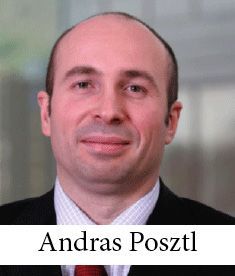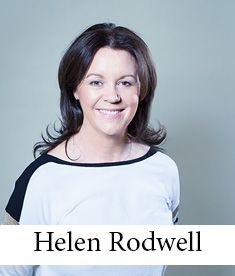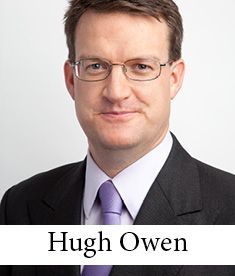A full decade apart, the Romanian real estate market booms that began in 2004 and 2014 have key similarities but at the same time some important differences.

Then as now, we as a law firm remain leaders in real estate and finance both in Romania and the broader region. While our name has changed from Salans to Dentons, the team and offices have never stopped setting the standard for superior legal advice by fully integrated practice groups, wherever our desks happen to be located. This year alone, we have been proud to assist on (i) the acquisition by TPG (via P3) of CA Immo’s portfolio in Romania, Poland and Serbia; (ii) the sale by Aberdeen Asset Management of the iconic Metropolitan office building in Warsaw to Deutsche Asset & Wealth Management; (iii) the acquisition by Blackstone of a portfolio of 6 logistics and distribution parks located throughout Poland and the Czech Republic from Pramerica Real Estate Investors; and (iv) the sale by ING Real Estate of 50 percent shareholding in Allee Shopping Center to Allianz, and the remaining 50 percent to REI Investment Central Europe.
As 2014 draws to a close, we witness a pile of cash chasing too little product in the entire region, similar to the situation in 2004. Yet this time, it is a wall of equity that fuels the impending boom rather than bank debt. When an investor can plunk down EUR 150 million in cash to buy a shopping center in Bucharest, we know that bank debt has moved from “must have” to a “nice to have.” Until more banks enter or re-enter the Romanian real estate market, and until margins drop from 400+ bp to more realistic levels, we expect the equity to continue to flow. Many investors, at any rate, are betting that they will be able to refinance once debt becomes cheaper and lighter on the covenants.
Speaking of cash chasing too little product, yield compression in this Romanian real estate revival appears to be on the way to mirroring yield compression in the 2004-2008 boom. Of course, that may beg the question of what ARE current yields. With two players – NEPI and Globalworth – snapping up the lion’s share of assets in the past year, it is difficult to gauge true yields in such a distorted market. But the trend seems clear. Unless of course it is made unclear by assets securing NPLs that are expected to flush through the system and affect pricing on residencial, office, and retail. Massive portfolios – a few valued at half a billion euro each – have this year been sold or are on sale by Erste, Volksbank, Bank of Cyprus, and other lenders.
Ten years on, the rest of CEE has evolved irreversibly. Poland is now more like Western Europe than CEE. Czech Republic – although less liquid – is close behind. Chasing yields leads the way to Romania, which in the meantime has joined the European Union and found itself the beneficiary of intensified strategic interest by NATO. I, for one, don’t think there is any going back this time around. Romania’s keenest regional competitors are arguably no longer part of the region anymore. Romania is the elephant in the middle of the room: geographically and population-wise too big to miss. A freshly minted president with German roots has inspired confidence among foreign investors and optimism among Romanians who voted him into office. Vital infrastructure projects are, in fact, inching ahead despite doubts, qualms, and naysaying. While in the last boom, blue-chip real estate investors joined the stampede mostly toward the middle or end, this time it is the blue-chip investors (e.g., TPG, Lone Star, Cerberus) who lead the way. These remarkable changes underlie my belief that Romania is transforming into the new Poland.
Anecdotally, there seems to be a greater degree of comfort with the Romanian legal system and use of Romanian law documentation even among first-time investors. (Query whether this is justified!). This may be a result of an improved perception about the level of corruption, partly based on a number of astonishingly successful high-level prosecutions in recent years, including one involving a former prime minister, another involving the head of a political party that formed part of the governing coalition, another an infrastructure mogul, and the list goes on. It may be that, by and large, the judicial system has proven itself fairly sturdy and able to deal better than expected with sometimes difficult contractual disputes. Or maybe it’s simply familiarity with a system that, despite its flaws and frustrations and occasional blatantly incorrect court judgments (of which I have seen my share over the 11.5 years I have lived here), now has a proven track record to evaluate.
Back in 2007, many a developer and many an investor concluded that the financial crisis had mercifully and magically bypassed Romania. Who could blame them? Bankers were still dumping bundles of euros on conference room tables. Margins were low and tumbling. Yields were compressing at a dizzying rate. Speculative development was bounding ahead. The party continued. Until it stopped. Flash forward to 2014. The boom we are witnessing has barely started and already dire economic figures are being announced. In Romania, unemployment is comparatively low, growth is higher than expected, and labor costs remain attractive. Yet Germany is flat. Italy is in recession. Aggravating economic factors is the simmering geopolitical dispute with a revanchist Russia. While we skip merrily along the yellow brick road over the coming months, singing happily as the Romanian real estate market regains its froth, let’s remember that it is a long way to the Emerald City, and the wicked witch could yet land in our path and cast us into a downturn sooner than expected.
Andras Posztl, Country Managing Partner, DLA Piper, Hungary
This Article was originally published in the Special Year-End Issue of the CEE Legal Matters Magazine. If you would like to receive a hard copy of the magazine, you can subscribe here.



